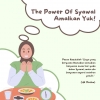Interestingly, the fact from the finding shows that there is no difference at all for both the first and the seventh semester students in producing fillers, especially for mitigating, since none of them produced fillers to mitigate. This is probably because the topic discussed in the conversation, which is about Petra Square Apartment, is not really related to the speaker's feelings, since mitigating functions to soften or mitigate utterances in order not to hurt the addressee's feelings (Baalen, 2001, par.5). This mitigating function actually appeared at the end of the conversation, such as "Okay then. Ee it seems that I have to go to my class". This ee functions not to hurt the addressee's feeling. However, because the data used for this research is limited to the questions and answers of the topic, this mitigating function is not covered in this research.
In this research, I only discussed on one function of one filler only. Actually, one filler can have more than one function, such as filling the pause and hesitating. Here is the example.
(a boy wants to express his feeling to a girl).
Boy : What to say? Hmm... I I want to say (--) hmm, would you be my girl?
The italicized and bolded hmm above can function to fill the pause to prepare his mental and at the same time, can function to hesitate or to search the right word to say next. Although using one filler for more than one function in a certain situation is difficult, but it is good to equip the speaker with several devices when having interactional conversations.
Overall, the fact that for both the first and the seventh semester students, hesitating takes the biggest percentage of the total fillers produced, followed by filling the Pause in the second position, does not give a significant difference. This may imply that both the first and the seventh semester students are not good enough since they just used fillers as what the common people use too in Bahasa, that is to hesitate and to fill the pause, whereas there are five other functions of fillers. This may mean that the length of studying time does not influence much for the students to use several functions of fillers. This might be because when people think about what to say next, they automatically produce fillers in order to hesitate. This function shows that the speaker completely forgets what he/she wants to say or the speaker needs time to search the right words (Matthei & Roeper, 1983, p.164, Wu, 2001, p.6). Then, filling the pause may suggest that the speaker actually breaks off speech while continuing to articulate (Stenstrm, 1994, p.7). Besides, it also probably helps the speaker while manifesting the hearer's attention.
CONCLUSION
In this research, I observed the types and the functions of fillers produced by the first and the seventh semester students of the English Department, Petra Christian University, based on the length of studying time. I did a comparison, especially in the differences and/or the similarities between the fillers used by both the first and the seventh semester students. Then, I gained the data from the conversations from 40 students, consisting of 20 students for each semester, in a role-play. Mainly, I used the theory on the types and the functions of fillers from Rose (1998), Stenstrm (1994), Wu (2001), and Baalen (2001). Furthermore, I conducted this research in quantitative-descriptive approach.
In the findings and discussions, I found that the first semester students produced less fillers than the seventh semester students. The first semester students produced 316 fillers (consisting of 58 silent pauses, 141 unlexicalized filled pauses, and 117 lexicalized filled pauses), while the seventh semester students produced 424 fillers (consisting 65 silent pauses, 207 unlexicalized filled pauses, and 152 lexicalized filled pauses). Then, both the first and the seventh semester students produced unlexicalized filled pauses as the most frequently used type of fillers, followed by lexicalized filled pauses and then silent pauses. In general, ee is the most frequently used filler. Both the first and the seventh semester students produced fillers in order to fill the pause, to hesitate, to holding a conversation turn, to empathize, and to edit the term. Hesitating and filling the pauses are the most frequently used functions. However, mitigating function did not appear at all in the data that I got.
As a conclusion, I concluded that there is no significant difference between the types and the functions of fillers used by the first and the seventh semester students due to there are a lot of significant similarities found. Besides, the length of the studying time does not influence much on the fillers used. Overall, both the first and the seventh semester students are not good yet in using several types of fillers and several functions of fillers because they just used ee and ehm as the most frequently used types of fillers, and they just used fillers to hesitate and to fill the pause as the most frequently used functions, out of seven functions. So, the statement that due to the longer studying time that the seventh semester students produced more lexicalized filled pauses for more appropriate functions compared to the first semester students is completely incorrect.
By conducting this research, hopefully the students of the English Department, Petra Christian University can realize how important the fillers are and how big the function roles of fillers are in the spoken interaction, especially in the interactional speech, because it cannot be denied that they are accustomed to have more transactional speeches in the classroom. In addition, hopefully by reading this research, the students can have a good and appropriate communication skill, and the lecturer or curriculum designers, especially those who teach speaking class, can design an appropriate curriculum that pays more attention to the interactional speech, besides transactional speech.








